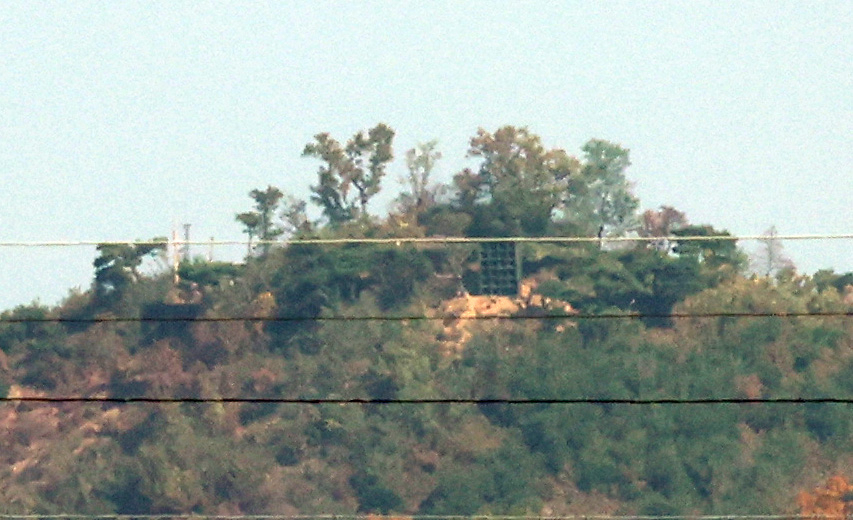
 |
| Loudspeakers are visible on a hillside in Gaepung-gun, Hwanghae-do, North Korea, as seen from Songhae-myeon, Ganghwa-gun, Incheon, on Oct. 31. (Yonhap) |
Disruptive noises from North Korean loudspeakers have caused residents near the inter-Korean border to suffer for months, with some complaining that their health has been compromised, according to local governments on Thursday.
Data from a recent mental health assessment in Gimpo, Gyeonggi Province, has shown that 28 percent of the assessed residents are experiencing significant mental health concerns. Conducted by the city’s mental health welfare center from Aug. 8 to 14, it assessed 102 residents living close to the border in Wolgot-myeon and Haseong-myeon.
The data indicates that two individuals fell into a "high-risk category" for mental health issues, while 27 were labeled as being in a "watch" category, dealing with notable symptoms of stress and anxiety. The remaining 73 residents were considered to be within a normal range.
Predominantly affecting the elderly population -- many in their 70s and 80s -- the noise has resulted in various symptoms, such as sleep disorders, heightened stress levels and persistent anxiety. These symptoms have been reported since the broadcasts started in earnest last September, making their daily lives increasingly intolerable, according to the assessment.
The broadcasts, which consist of peculiar sounds like sirens and metal clanging, stop and start repeatedly at all hours, with noise levels ranging from that of a telephone ringing to subway noise, according to local reports.
"The eerie, metal-grinding sounds permeate the day and night from the North, depriving us of sleep and making daily life a challenge due to constant fear and anxiety," one resident described.
"We plan to offer psychological counseling and psychiatric treatment for those interested, aiming to enhance residents' mental stability," a Gimpo city official said. "Additionally, we are proposing measures to the Gyeonggi Province and the central government, including temporary housing support, and installation of soundproof windows and doors."
Similarly, North Korean broadcasts cause residents of Ganghwa-gun, Incheon, to suffer. In impacted areas near the border, such as Songhae-myeon, Yangsa-myeon and Gyodong-myeon, 52 percent of some 8,800 residents have been affected, according to Ganghwa-gun.
The residents have expressed high stress levels due to relentless noise, especially at night, disrupting sleep and frightening children.
The Incheon government plans to install soundproof facilities in the Dangsan-ri area starting early next year.
The disruptive noises, first reported in late July and described as high-pitched and similar to scraping metal, also feature sirens and drums that persist around the clock. Officials in Seoul believe this may be a retaliatory measure by the North against South Korea's resumption of loudspeaker broadcasts earlier that month. Additionally, it might serve as a tactic to prevent North Korean citizens from hearing South Korean propaganda.
Since late July, the South Korean military has been blaring daily propaganda broadcasts into North Korea, in response to the North's launch of trash-carrying balloons which began in late May. These broadcasts include K-pop songs and news critical of Kim Jong-un's regime, such as reports on the defection of North Korean diplomats and soldiers.









